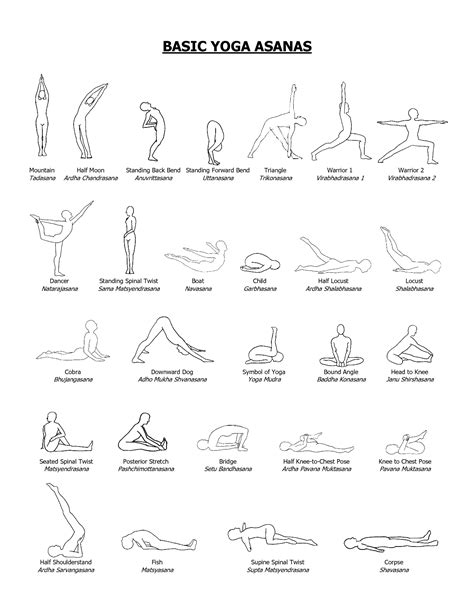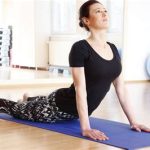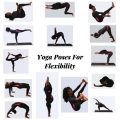Essential Yoga Hand Positions: A Comprehensive Guide to Mudras for Beginners and Experts
Yoga is much more than a physical practice. It incorporates breath control, meditation, and mudras—symbolic hand positions—to harness and direct the body’s energy flow. Each mudra has a unique significance and practical application, impacting both physical and mental well-being. In this guide, we’ll dive deep into basic yoga hand positions, or mudras, providing a comprehensive breakdown for both beginners and seasoned practitioners.
Introduction to Yoga Mudras
Mudras, also known as “seals” or “gestures,” are symbolic hand positions used to channel energy within the body and mind during yoga or meditation practices. Mudras are powerful tools in yoga as they can influence the flow of prana (life energy) and enhance concentration, physical health, and spiritual enlightenment. They serve as subtle, non-verbal forms of communication with the body, affecting how we feel emotionally, physically, and spiritually.
For both beginners and seasoned yogis, understanding and mastering these basic hand positions can deepen your practice, leading to better health and greater mindfulness.
Key Concepts: Understanding Mudras
- Mudra: Derived from the Sanskrit word meaning “seal” or “gesture,” mudras involve intricate finger and hand positions.
- Prana: Life force energy that flows through the body. Mudras direct this flow.
- Chakras: Energy centers in the body that mudras help to activate or balance.
- Intent: Mudras are often practiced with specific intentions such as promoting focus, calming the mind, or healing.
- Breathwork: Coordinating breath with hand gestures to intensify their effects.
Historical Context of Mudras in Yoga
Mudras have been used for centuries across multiple cultures, not just within the practice of yoga. Hindu, Buddhist, and Jain art from ancient India frequently depict deities, saints, and enlightened beings using specific mudras to communicate wisdom, compassion, or power. These hand positions have transcended religious boundaries, making their way into various spiritual practices and healing modalities.
Historically, mudras were used in conjunction with mantra chanting, meditation, and pranayama (breathing techniques) to balance the body’s energy. Ancient yogis believed that certain hand positions could influence the energy pathways in the body, thereby enhancing mental, physical, and spiritual health. Modern yoga has adopted many of these traditional practices, incorporating mudras into regular asana routines and meditation techniques.
The Current State of Mudra Practice in Modern Yoga
In contemporary yoga practice, mudras are often integrated with asanas (physical poses) and pranayama to optimize the benefits of a yoga session. Many modern-day yoga classes, workshops, and even yoga apps introduce mudras as an integral part of mindfulness and spiritual growth. As more people explore the mental and emotional benefits of yoga, mudras are gaining recognition for their ability to promote focus, relaxation, and overall well-being.
Despite their widespread use, mudras are sometimes overlooked or simplified in mainstream yoga, often reduced to mere hand gestures without their full meaning and potential explored. However, yoga practitioners who delve into the subtleties of mudras often report a deeper, more enriching experience, both on and off the mat.
Practical Applications: How to Incorporate Mudras in Your Practice
Understanding the practical applications of yoga mudras can make your practice more versatile and mindful. Here are some examples of commonly used mudras and how you can incorporate them into your daily yoga routine:
| Mudra | Benefits | How to Perform | Applications |
|---|---|---|---|
| Gyan Mudra | Improves concentration, enhances creativity, and boosts memory. | Touch the tip of the index finger to the tip of the thumb, keeping the other three fingers straight. | Use during meditation or in seated postures like Sukhasana (Easy Pose) or Padmasana (Lotus Pose). |
| Prana Mudra | Boosts vitality, reduces fatigue, and enhances immunity. | Touch the tip of the thumb to the tips of the ring and little fingers, keeping the other fingers extended. | Ideal for early morning practices or anytime you feel low energy. |
| Anjali Mudra | Promotes inner balance, respect, and gratitude. | Place your palms together in front of your chest in a prayer-like position. | Use before starting your yoga practice, during pranayama, or at the end in Namaste. |
| Surya Mudra | Boosts metabolism and helps manage weight. | Bend the ring finger to touch the base of the thumb, pressing the thumb lightly on it. | Practice during your morning routine to stimulate the body’s internal fire. |
| Shuni Mudra | Encourages patience and discipline. | Touch the tip of the middle finger to the thumb, keeping other fingers straight. | Use when setting an intention at the start of your practice. |
Case Studies: Real-Life Examples of Mudras in Yoga Practice
Many seasoned yogis report transformative results from incorporating mudras into their practice. Here are some case studies to highlight the practical effects of these hand positions:
- Case Study 1: Enhancing Focus with Gyan Mudra – A busy professional found that incorporating Gyan Mudra during meditation significantly improved her focus and reduced anxiety, leading to increased productivity at work.
- Case Study 2: Boosting Energy with Prana Mudra – A yoga instructor started using Prana Mudra in her morning routine, and within weeks reported feeling more energetic throughout the day, with reduced reliance on caffeine.
- Case Study 3: Cultivating Gratitude with Anjali Mudra – A long-term practitioner used Anjali Mudra to foster gratitude and emotional resilience, helping her cope with stress during a challenging life transition.
Stakeholder Analysis: Who Benefits from Mudra Practice?
The practice of mudras is beneficial to a wide variety of stakeholders:
- Yoga Practitioners: Both beginners and advanced students can deepen their practice by incorporating mudras for mental clarity, energy, and balance.
- Yoga Teachers: Can offer more comprehensive classes by including mudras, enriching their students’ understanding of yoga’s subtle aspects.
- Meditators: Incorporating mudras enhances focus and deepens the meditation experience.
- Health Professionals: Therapists and holistic practitioners can use mudras as an adjunct therapy for stress, anxiety, and other conditions.
Implementation Guidelines for Using Mudras
For those new to mudras, here are some basic guidelines for incorporating them into your practice:
- Start with basic mudras like Gyan or Anjali Mudra to get comfortable with the hand positions.
- Combine mudras with pranayama or meditation for best results.
- Hold each mudra for at least 5-10 minutes to experience its effects.
- Be mindful of the hand pressure—gentle, not forced.
- Use mudras in a quiet, meditative environment for deeper results.
Ethical Considerations in Mudra Practice
Yoga and mudras are ancient practices with deep cultural and spiritual roots. It is important to approach them with respect and mindfulness, avoiding appropriation or commercialization without understanding their origins. For teachers, presenting mudras within the cultural context in which they were developed is essential for maintaining the integrity of the practice.
Limitations and Future Research
While mudras are beneficial in many ways, their effects are often subtle and cumulative, requiring consistent practice. There is still limited scientific research into the physiological and psychological effects of mudras, leaving room for further studies to explore their benefits in greater depth. Future research might investigate the neurobiological mechanisms underlying mudra practices or their applications in therapeutic settings.
Expert Commentary: Insights from Mudra Practitioners
According to yoga experts, mudras are one of the most underutilized tools in modern yoga practice. “They hold the potential to transform a simple yoga session into a deeply mindful experience,” says one expert. Others emphasize the holistic nature of mudras, which can harmonize mind, body, and spirit when used consistently. The key takeaway from seasoned practitioners is that while mudras may seem simple, their impact can be profound, offering mental clarity, emotional balance, and physical healing.








